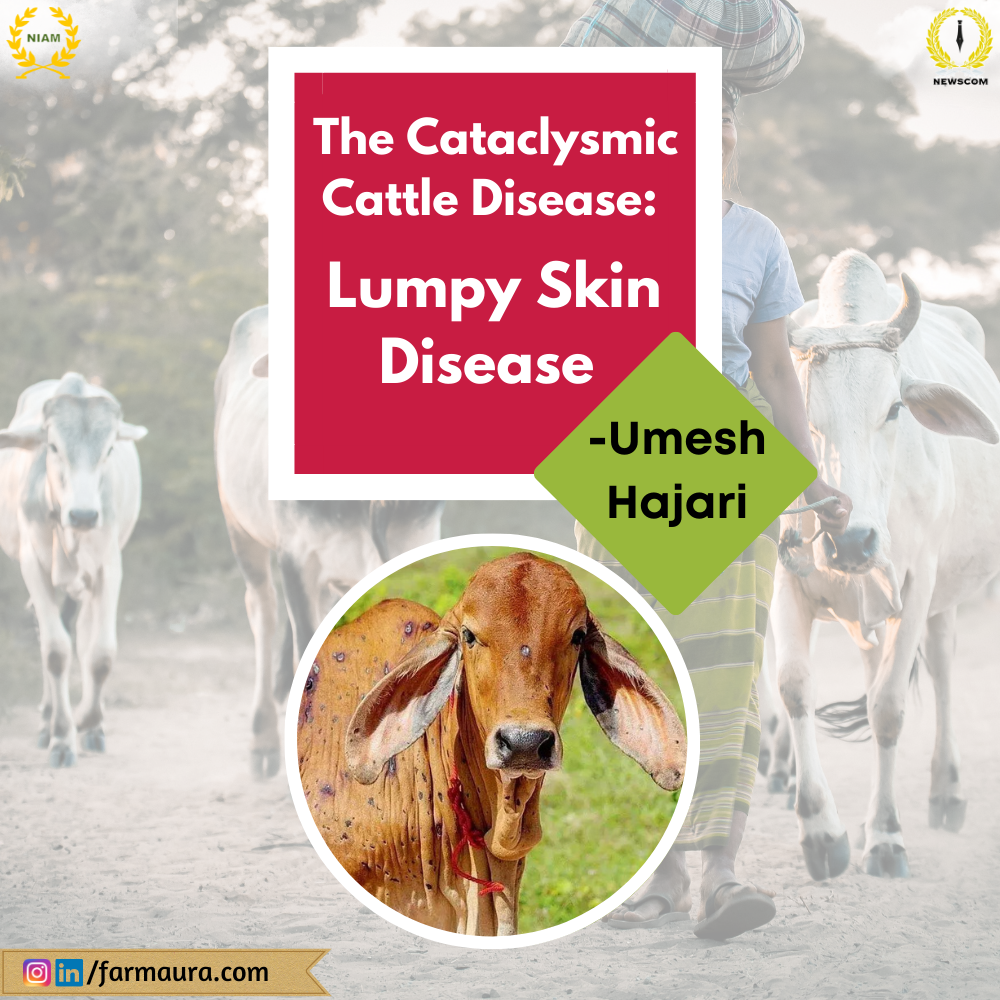First reported in Kenya in 1921, Lumpy skin disease (LSD) spread like a wildfire across the globe. It was first reported in India in September 2020 in Maharashtra. According to the data available from the Ministry of Fisheries, Animal Husbandry, and Dairying at least more than 1 lakh cattle are dead, and over 2 million are infected in 251 districts across 16 states due to the recent LSD epidemic.
Lumpy skin disease (LSD) is a pox viral disease of cattle usually occurring during the wet summer season and autumn months when the population of its vector i.e., Hard ticks (Rhipicephaus & Amblyomma species), stable flies (Stomoxys cacitrans), and Mosquitoes (Aedes aegypti) are abundant. The virus of LSD is closely related to Sheep and Goat pox viruses having the same Capripoxvirus genus and Poxviridae family. In some cases, calves may get infected by drinking infected cow milk.
Economic Impact of Lumpy skin diseases
According to the latest Livestock census country account for 536.76 million livestock and the sector contributes around 4 percent of total gross value.

With a mortality rate reaching up to 10% Lumpy skin disease possess a huge economic challenge to the livestock and dairy sector, the disease has the potential to decrease 40-50% of milk production and can infect up to 45% of the herd if left unchecked. The Disease causes emaciation (loss of body condition because of unwillingness to eat) and increases the risk of abortion during the infection.
Symptoms showed by Lumpy Skin Disease
Infected animals show an array of symptoms like the appearance of skin nodules on the nose, udders, vulva, and scrotum, the presence of swollen legs, sore development, and enlargement of peripheral lymph nodes. Nasal discharge, Infertility in bulls due to orchitis (testes infection), Infertility in cows, Mastitis, lachrymation, fever, loss of appetite, and occurrence of pneumonia are other prominent symptoms.
Treatment and Precaution measures
Sick animals should be immediately quarantined, and treatment should be conducted with the consultation of a veterinarian. Administration of antibiotics, anti-inflammatories, and antihistamines are done to check secondary infection and Paracetamol in case of pyrexia is suggested.
The infected animal should be fed with liquid food, soft feed, fodder, and succulent pasture apart from that oral administration of multivitamins is advised.
To stop vector transmission the eroded skins must be treated with fly-repellent and antiseptic ointment. Efforts should be made to reduce the vector population in the affected area.
ICAR has recently launched the Lumpi-ProVacind vaccine. It is a homologous, live attenuated vaccine specifically targeted to protect cattle against the LSD virus. Currently, at least 97 lakh vaccine doses against lumpy skin disease have been administered. Out of these, nearly 8 lakh cattle have recovered from the viral infection.
Time and again livestock epidemics exposed the poor state of livestock health in India which is one of the biggest factors contributing to the low productivity of Indian livestock, with an annual growth rate of 8.15% and the increasing prominence of the Livestock sector it is high time to develop a countrywide framework to deal with future livestock epidemics.
References
Lumpy Skin Disease outbreak shows livestock diseases are not just about animals; here is why
by Shagun, Snigdha Das, Published: Friday 11 November 2022




